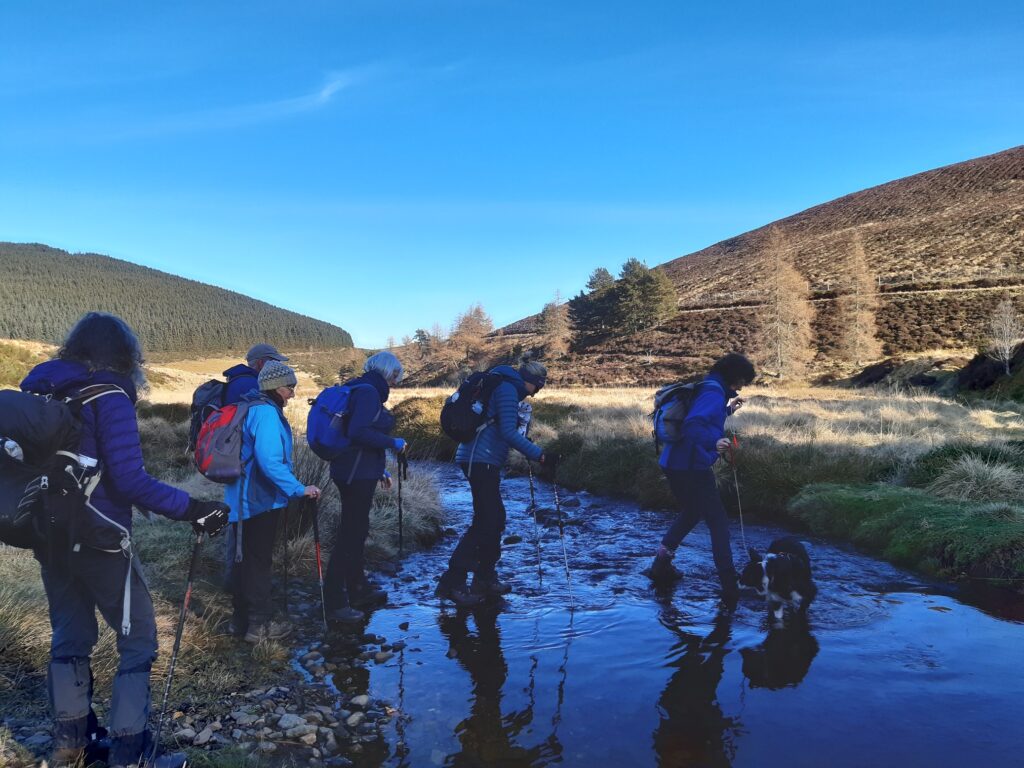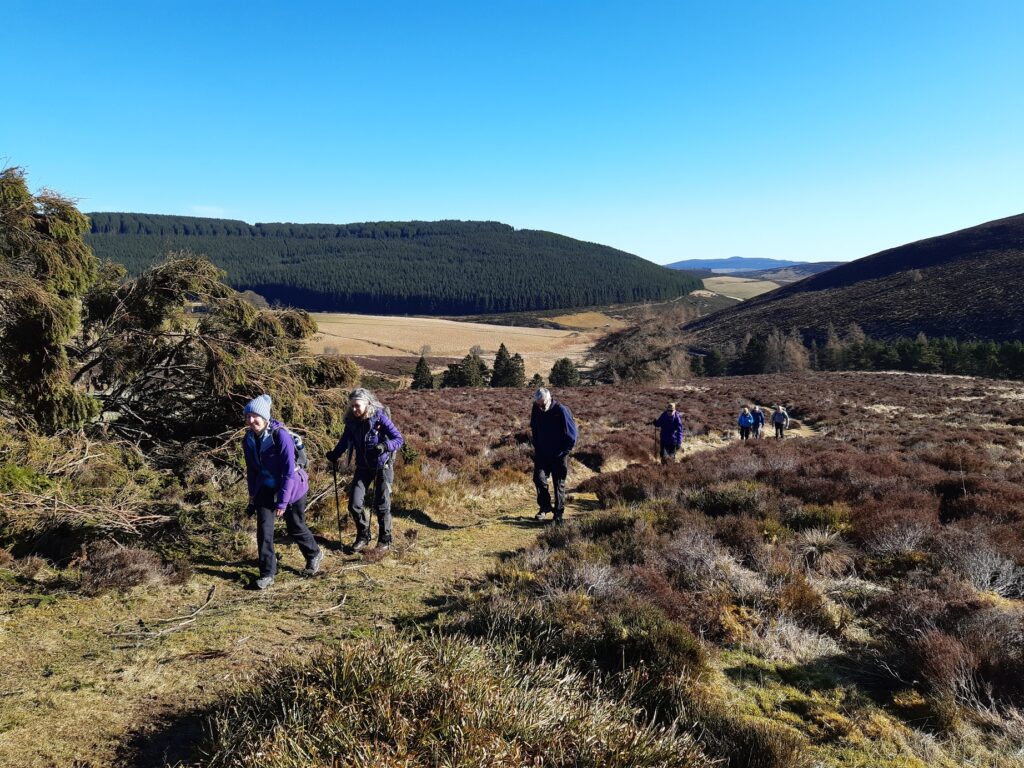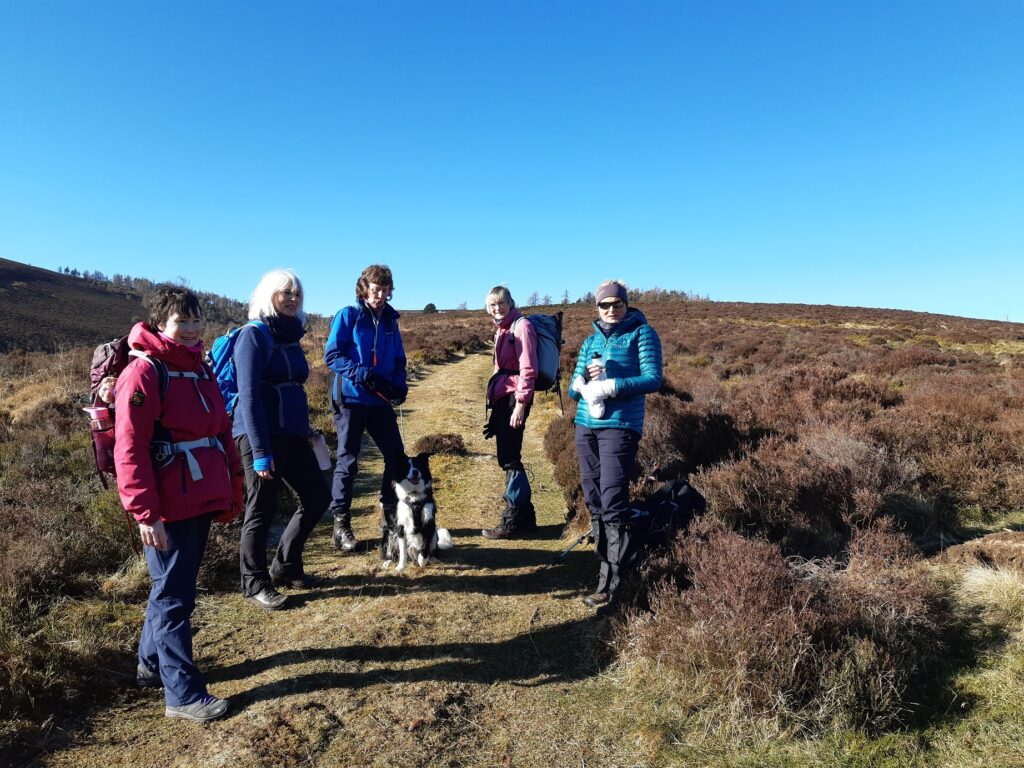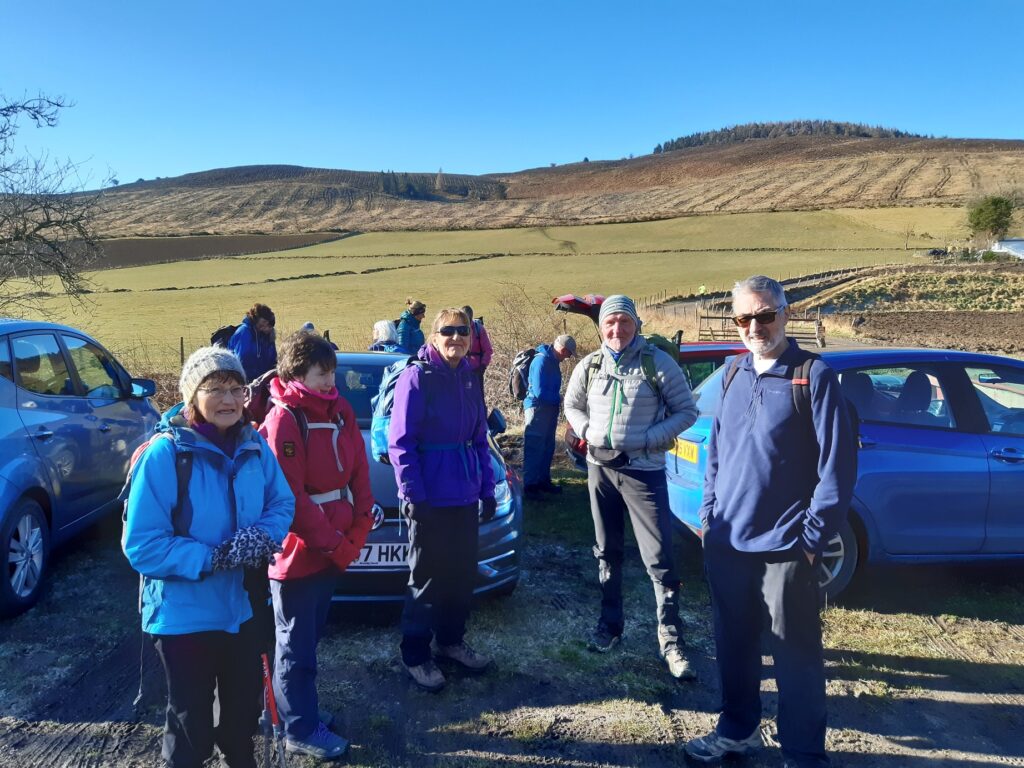The Correen Hills are an area of rolling, open heather moorland, rising to 518 metres (1699 feet) at the dome of Lord Arthur’s Hill, the highest point of the area, north of Alford. The hills give a very pleasant circular walk from near the tiny hamlet of Tullynessle. Thirteen walkers gathered there before heading on to the start of the walk at Dubston Farm, where there was space to park cars on the grassy verge. Unfortunately I was unable to take part in the walk as a result of some heavy gardening the day before, which resulted in a pulled muscle in my back and thigh. Walking 10 miles the next day was now out of the question. So my commentary on what happened during the walk comes from Tony Forster; but I can give you some history of the area.
Near the start of the walk is the pink-walled Terpersie castle, close to Tullynessle. Constructed in 1561 by the Gordon family, it was restored in 1665 after having been burnt down before the Battle of Alford in 1645. It is now restored again as a private residence.
The steady ascent up the Fouchie Shank – an old right of way through the Correen Hills from Lumsden to Tullynessle – offered ever-expanding views back down the glen. A substantial cairn can be found on the bald summit area of Lord Arthur’s Hill, but the summit trig point is reached by a short detour across the heather. The weather could not have been better: a little chilly at times, but blue skies and wall-to-wall sunshine. From the summit there were great views of many of the local hills of Aberdeenshire, including The Buck, the Tap o’Noth, Bennachie and Morven.
‘But,’ I can hear you all cry, ‘who was Lord Arthur? Was he a real person?’ The answer to that is – yes. The hill’s name arises from an incident in 1571 when the body of Lord Arthur Forbes, the 6th Lord’s youngest son, was being carried over the hill for burial in Auchindoir churchyard. He was known as ‘Black Arthur’ because of his dark complexion. During an unseasonable snowstorm, in complete contrast to today when it was so fine and clear, the coffin bearers rested near the summit. There is now a ruined stone shelter here called ‘The Summer House’, believed to be built on a much older cairn. Hence the hill was named ‘Lord Arthur’s Hill’. Black Arthur was killed at the Battle of Tillieangus, near Clatt, during the Marian civil war, in which the Catholic Gordons supported the abdicated Mary, Queen of Scots, and the Forbes family supported her infant son, James VI of Scotland. On 10 October 1571, a force of Gordons was advancing on the Suie Hill road on their way to Edinburgh, the focus of the conflict. They were opposed by a force of Protestant Forbes under the command of Black Arthur. The Gordons were victorious and Black Arthur was killed whilst defending the retreat. According to the records, he ‘stooped down to quench his thirst and one of the Gordons gave him his death blow through an open joint in his armour’.
The circular walk was completed by following grassy hill tracks before descending into Contlach Shank, passing the abandoned Correen Quarry. The track continued very pleasantly down to the Esset Burn, which had to be crossed before rejoining the outward route back to Dubston and the start.
Everyone enjoyed our usual club banter during the walk, and even getting feet a little damp in the Esset Burn at the end of the walk didn’t spoil the day.
Many thanks to Tony Forster for leading this walk and for the photos.





